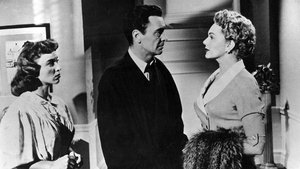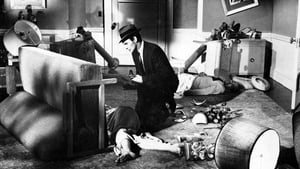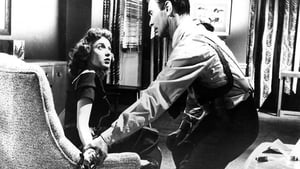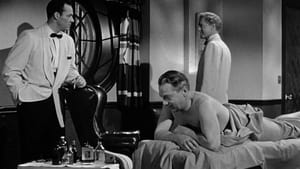Video Sources 0 Views
- The Miami Story 1954 Colorized

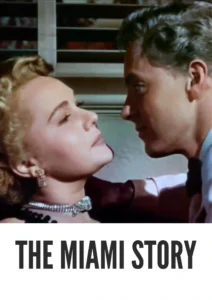
Synopsis
Table of Contents
Toggle
Step into the sun-drenched, yet shadowy, world of Miami with Miami Story, a compelling crime drama from 1954, now brilliantly colorized to bring its gritty narrative to life. Starring Barry Sullivan as an undercover agent battling rampant corruption and featuring Luther Adler, this film offers a stark look at the underbelly of a vibrant city. This HD download is perfect for fans of classic crime films and those seeking a thrilling, action-packed story with a dose of vintage glamour.
Miami Story plunges you into the heart of Miami’s criminal underworld, where federal agent Mick Flagg (Barry Sullivan) goes undercover to expose a vast network of corruption and illegal activities. Posing as a wealthy businessman, Flagg infiltrates the city’s gambling rackets and soon finds himself entangled in a dangerous game with ruthless mobsters and crooked officials.
As Flagg delves deeper, he uncovers a complex web of bribery, extortion, and violence that threatens to consume the city. With the help of local law enforcement and a courageous informant, he races against time to gather enough evidence to bring down the criminal empire. The film builds to a suspenseful climax as Flagg risks his life to expose the truth and restore justice to Miami. Miami Story is a thrilling exposé that captures the raw energy and dark secrets of a city on the brink.
The film boasts a stellar cast that brings the gripping story to life:
-
Barry Sullivan as Mick Flagg
-
Luther Adler as Tony Brill
-
John Ireland as Ben Arno
-
Beverly Garland as Holiday
-
Mike Mazurki as Big Phil
Miami Story falls squarely into the crime drama genre, enhanced with elements of film noir and action. Its focus on corruption, undercover investigations, and moral ambiguity creates a dark and compelling atmosphere.
Released in 1954, Miami Story reflects the growing fascination with organized crime and corruption in post-war America. The film capitalizes on Miami’s burgeoning image as a glamorous tourist destination with a hidden dark side. During this era, crime films often served as cautionary tales, exploring the consequences of greed and the challenges of upholding justice in a corrupt world. Miami Story is a product of its time, mirroring both the anxieties and the cinematic trends of the 1950s.
This colorized version of Miami Story has undergone a meticulous restoration process, utilizing advanced digital techniques to enhance the visual experience. The original black and white footage was carefully analyzed to determine the appropriate color palette for each scene, bringing a new dimension to the film’s atmosphere and characters. This process not only revitalizes the film for modern audiences but also preserves its original narrative integrity. The colorization aims to enhance the storytelling, making the vibrant setting of Miami even more impactful.
-
: Fred F. Sears
-
: Robert E. Kent
-
: George Bruce
-
: Henry Freulich
-
: Viola Lawrence
-
: Mischa Bakaleinikoff
-
: Sam Katzman Productions
-
: Columbia Pictures
-
: 75 minutes
-
: MP4
-
: HD (1080p)
-
: Compatible with most devices, including smartphones, tablets, computers, and smart TVs.
Miami Story (1954) is a solid example of a 1950s crime film, praised for its fast-paced plot, strong performances, and realistic portrayal of Miami’s criminal underworld. While perhaps not as widely celebrated as some other films of the era, it remains a compelling and entertaining watch for fans of the genre. Its gritty realism and engaging storyline have ensured its enduring appeal.
-
: What is Miami Story about?
-
A: Miami Story is a crime drama about an undercover agent who infiltrates Miami’s criminal underworld to expose corruption.
-
-
: Is Miami Story (1954) a well-known crime film?
-
A: While not a blockbuster, Miami Story is a respected and entertaining example of 1950s crime cinema.
-
-
: Is this version of Miami Story colorized?
-
A: Yes, this version has been professionally colorized to enhance the viewing experience.
-
-
: What makes Miami Story interesting for crime film fans?
-
A: Miami Story offers a glimpse into the dark side of Miami in the 1950s, with a compelling story and strong performances.
-
-
: What is the download format?
-
A: The download format is MP4, which is compatible with most devices.
-
-
: What resolution is the download?
-
A: The resolution is HD (1080p), providing a high-quality viewing experience.
-
Watch Miami Story Today! Also known as Undercover, this thrilling film awaits!
